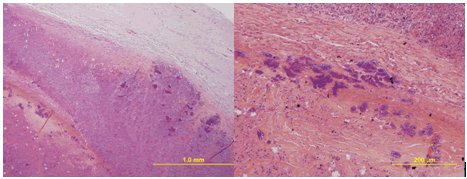Etiology: S. aureus is a Gram-positive coccus that makes coagulase and hemolysin. It is frequently isolated from mucous membranes and the skin of rabbits and considered resident or “normal” flora. However, some S. aureus biotypes are capable of toxin production.
Incidence: Incidence of infection is common.
Transmission: Direct contact is the primary mode of spread; interspecies transmission of S. aureus has been documented.
Clinical Signs: There are several manifestations of the disease including abscess formation, mastitis, respiratory disease, and septicemia.
Abscesses: Abscesses are common in the subcutis of the mandible and lower abdomen. Bone destruction in mandibular lesions with tooth loss or nerve damage is an infrequent sequela.

Mastitis: Mastitis is common in multiparous does that are “heavy milkers”. Signs include depression, fever, and warm, red, swollen mammary glands; glands may rupture and release purulent material.
Respiratory disease: Rhinitis, conjunctivitis, and pneumonia may occur. The disease course is short, often resulting in septicemia. Necrotizing lesions with suppurative exudation and edema may be apparent.
Septicemia: Septicemia is seen primarily in nursing bunnies and occurs from extension of infected lesions or from ingestion of contaminated milk. Gross lesions may include multiple necrotic foci in viscera. Histologically, necrosuppurative septic foci in the viscera, hemorrhage, and fibrin in the lung may be visualized.
Diagnosis: Culture of lesions and confirmation of toxins by cell toxicity assays; genes for virulence factors can be identified by PCR. Impression smears and histopathology of lesions with demonstration of large, Gram-positive cocci from necrosuppurative lesions can confirm the diagnosis.